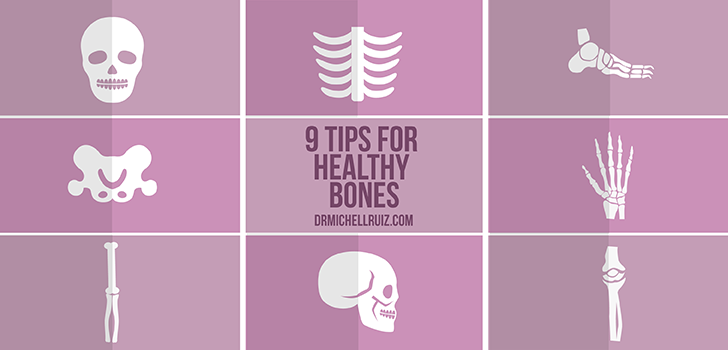We have learned a great deal more about bones — the way they work, grow, rebuild, weaken, and break. Most importantly, we have learned about bone metabolism and how bone constantly changes, rebuilding itself throughout our lives.
Bone cells can respond rapidly to their environment. Increased stress can strengthen the structure of individual bones to resist fracture. Lack of stress, such as bed rest or weightlessness in space, can rapidly weaken bone.
By 2025 is predicted each year to be 3 million older Americans sustained fractures because of weak bones, leading to temporary or permanent disability, and even death.
Fortunately there are things you can do to maintain and even improve your bone strength:
Understand your individual risk for fracture. This is based on any risk factors you have — such as age, smoking, a history of falls, diabetes, inflammatory and autoimmune diseases, certain medications that cause bone loss, and your bone density. Ask your doctor if you need a bone density test.
Understand your individual risk for bone loss. Genetics plays a large role in bone health, and some people have genetically determined high rates of bone turnover after menopause or with aging. Bone metabolism testing can provide additional information about your risk for fracture. It can also be used to ensure that you are responding to osteoporosis medications.
Be active every day. Strength-building and weight-bearing activities help build strong bones. Children should exercise at least one hour each day and adults should get 30 minutes of daily activity.
Maintain a healthy weight. Older adults who are overweight have a higher risk for falling. Being underweight raises the risk of bone loss and fractures.
Get enough calcium and Vitamin D. The health of our bones depends on steady stream of nutrients, most importantly calcium and Vitamin D.
Do not smoke. Smoking can reduce bone mass and increase your risk for a broken bone. Nicotine inhibits bone-forming cells.
Limit alcohol use. Heavy alcohol use reduces bone mass and increases your risk for falls and broken bones.
Reduce your risk of falling. Exercise can help reduce your risk of falling. There also are many changes you can make in your home to help prevent a fall. Remove obstacles and add safety features — such as grab bars and non-slip mats — where needed.
Learn more (video): Home Safety Checklist preventing hip fractures
![]() 𝘛𝘩𝘪𝘴 𝘪𝘯𝘧𝘰𝘳𝘮𝘢𝘵𝘪𝘰𝘯 𝘪𝘴 𝘧𝘰𝘳 𝘦𝘥𝘶𝘤𝘢𝘵𝘪𝘰𝘯𝘢𝘭 𝘱𝘶𝘳𝘱𝘰𝘴𝘦𝘴 𝘰𝘯𝘭𝘺; 𝘯𝘰 𝘪𝘯𝘧𝘰𝘳𝘮𝘢𝘵𝘪𝘰𝘯 𝘪𝘴 𝘪𝘯𝘵𝘦𝘯𝘥𝘦𝘥 𝘰𝘳 𝘪𝘮𝘱𝘭𝘪𝘦𝘥 𝘵𝘰 𝘣𝘦 𝘢 𝘴𝘶𝘣𝘴𝘵𝘪𝘵𝘶𝘵𝘦 𝘧𝘰𝘳 𝘱𝘳𝘰𝘧𝘦𝘴𝘴𝘪𝘰𝘯𝘢𝘭 𝘮𝘦𝘥𝘪𝘤𝘢𝘭 𝘢𝘥𝘷𝘪𝘤𝘦.
𝘛𝘩𝘪𝘴 𝘪𝘯𝘧𝘰𝘳𝘮𝘢𝘵𝘪𝘰𝘯 𝘪𝘴 𝘧𝘰𝘳 𝘦𝘥𝘶𝘤𝘢𝘵𝘪𝘰𝘯𝘢𝘭 𝘱𝘶𝘳𝘱𝘰𝘴𝘦𝘴 𝘰𝘯𝘭𝘺; 𝘯𝘰 𝘪𝘯𝘧𝘰𝘳𝘮𝘢𝘵𝘪𝘰𝘯 𝘪𝘴 𝘪𝘯𝘵𝘦𝘯𝘥𝘦𝘥 𝘰𝘳 𝘪𝘮𝘱𝘭𝘪𝘦𝘥 𝘵𝘰 𝘣𝘦 𝘢 𝘴𝘶𝘣𝘴𝘵𝘪𝘵𝘶𝘵𝘦 𝘧𝘰𝘳 𝘱𝘳𝘰𝘧𝘦𝘴𝘴𝘪𝘰𝘯𝘢𝘭 𝘮𝘦𝘥𝘪𝘤𝘢𝘭 𝘢𝘥𝘷𝘪𝘤𝘦.
![]() 𝘛𝘢𝘭𝘬 𝘵𝘰 𝘺𝘰𝘶𝘳 𝘥𝘰𝘤𝘵𝘰𝘳 𝘢𝘣𝘰𝘶𝘵 𝘺𝘰𝘶𝘳 𝘸𝘰𝘳𝘬𝘰𝘶𝘵 𝘳𝘰𝘶𝘵𝘪𝘯𝘦 𝘣𝘦𝘧𝘰𝘳𝘦 𝘣𝘦𝘨𝘪𝘯.
𝘛𝘢𝘭𝘬 𝘵𝘰 𝘺𝘰𝘶𝘳 𝘥𝘰𝘤𝘵𝘰𝘳 𝘢𝘣𝘰𝘶𝘵 𝘺𝘰𝘶𝘳 𝘸𝘰𝘳𝘬𝘰𝘶𝘵 𝘳𝘰𝘶𝘵𝘪𝘯𝘦 𝘣𝘦𝘧𝘰𝘳𝘦 𝘣𝘦𝘨𝘪𝘯.
Source: American Academy of Orthopaedic Surgeons



